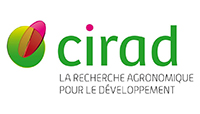Modelling the transfer and degradation kinetics of aroma compounds from liquid media into coffee beans during simulated wet processing conditions
Résumé
Models of increasing complexity were developed to identify and represent mechanisms affecting the evolution of the concentration of 3 aroma compounds (2-phenylethanol, isoamyl acetate and butanal) usually produced by yeasts and transferred to coffee beans during the fermentation. Model parameters were identified from simulated wet treatment performed with four media (M1: dehulled beans, M2: demucilaginated beans, M3: depulped beans, M4: depulped beans with yeast), at 25 ◦C using labeled aroma compounds. The transfer of 2-phenylethanol was well described by a model including evolving resistance over time (R2 = 0.98) while the accumulation of isoamyl acetate and butanal was better described by a model including two first order reactions in parallel (r2 = 0.87–0.66 and r2 = 0.80–0.67, respectively). The model development contributed to understand several mechanisms involved during fermentation such as the evolutive parchment resistance and the complex degradation reactions that take place simultaneously and have a significant impact on the compounds transfer.
| Origine | Fichiers produits par l'(les) auteur(s) |
|---|



